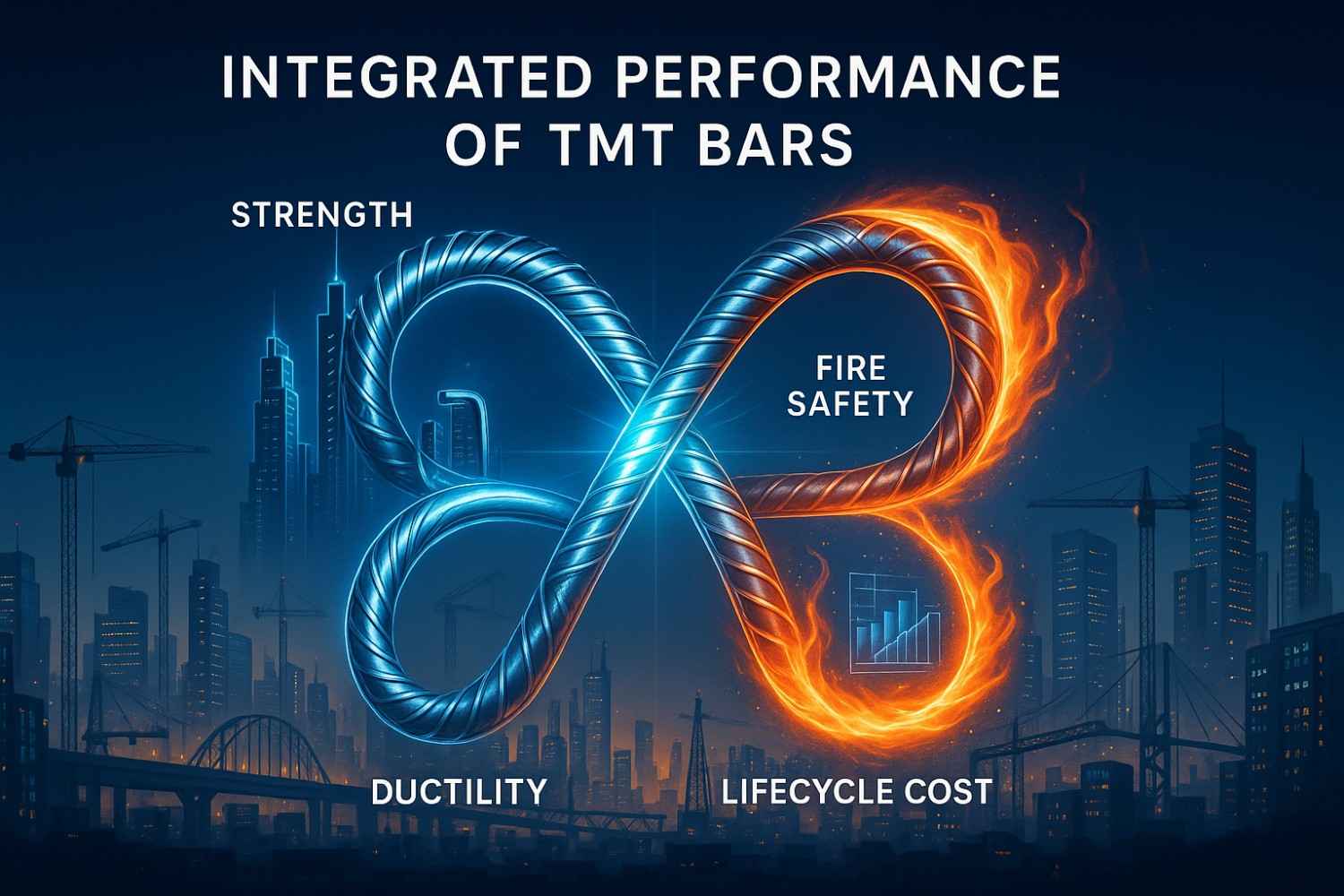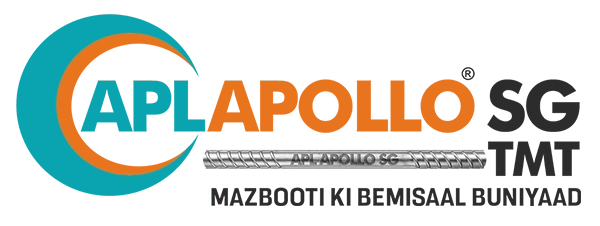
Introduction
In India’s rapidly evolving construction landscape, choosing the right TMT (Thermo-Mechanically Treated) bar is no longer just about compressive strength. Builders, contractors, and homeowners are now equally concerned about earthquake resistance, fire safety, corrosion protection, and lifecycle cost efficiency. With BIS-certified grades like Fe 500, Fe 500D, Fe 550, and Fe 550D, the selection process demands a holistic performance perspective.
This blog acts as a comprehensive pillar guide — integrating technical performance, economic considerations, and real-world case studies to help you make informed decisions for future-ready construction projects.
1. The Multi-Dimensional Role of TMT Bars in Construction
Traditionally, TMT bars were assessed primarily for their tensile strength. Today, multiple factors shape their suitability:
Strength-to-weight ratio for load-bearing efficiency.
Ductility for seismic zones.
Thermal resistance for fire-prone environments.
Corrosion resistance for coastal/industrial regions.
Lifecycle cost analysis for long-term projects.
👉 Internal Link: Why TMT Bars Crack in Columns or Beams
2. Strength & Load Performance
Fe 500 & Fe 550 grades are known for superior tensile strength.
Fe 500D & Fe 550D offer both strength and ductility, making them popular in high-rise construction.
In RCC (Reinforced Cement Concrete), higher grades reduce steel consumption, lowering initial costs.
📌 Case Example: A commercial tower in Delhi shifted from Fe 500 to Fe 550D TMT bars, reducing steel consumption by 8% without compromising safety.
3. Ductility & Earthquake Safety
Why ductility matters: During seismic activity, ductile TMT bars absorb shock, preventing brittle failure.
Fe 500D vs Fe 550D: Both are preferred in earthquake-prone zones, with Fe 550D suitable for taller RCC structures.

4. Fire & Thermal Resistance
Indian building codes now emphasize fire safety compliance.
TMT bars must withstand temperatures up to 600°C without significant loss of strength.
Premium Fe 550D bars offer better microstructure stability, ensuring greater thermal resilience.
5. Corrosion Resistance in Harsh Environments
Coastal regions like Mumbai or Chennai face high humidity and salinity → accelerated rusting.
APL Apollo SG TMT bars undergo advanced quenching processes, creating a strong outer surface that resists corrosion.
Use of epoxy-coated or galvanised binding wire further enhances protection.

6. Lifecycle Cost & Total Value Proposition
Lower-grade bars may be cheaper upfront but lead to higher maintenance/replacement costs.
Fe 500D and Fe 550D strike a balance: higher initial price, but lower lifecycle expense due to durability and reduced consumption.
For mega projects (bridges, highways, high-rise towers), lifecycle cost often outweighs initial savings.

Frequently Asked Questions
Fe 500D is widely used for residential and mid-rise buildings due to its ductility, while Fe 550D is stronger and preferred for high-rise and heavy load structures.
Yes, premium TMT bars can withstand temperatures up to 600°C, ensuring safety during fire incidents.
For coastal regions, Fe 500D or Fe 550D with corrosion-resistant features is recommended to prevent rusting from salinity.
Lifecycle cost refers to the total expense of using TMT bars, including initial purchase, durability, maintenance, and replacement over time.
Yes, BIS IS 1786:2008 specifies Fe 500, Fe 500D, Fe 550, and Fe 550D for different applications. In seismic zones, Fe 500D and Fe 550D are mandatory.
7. Sustainability & Future Trends
Green Construction Codes (2025 onwards) are encouraging use of low-carbon steel.
TMT bars manufactured via Electric Arc Furnace (EAF) routes reduce carbon footprint.
Builders are now considering embodied energy and recyclability as part of procurement decisions.
👉 Related Post: TMT Bar Price Today
8. Regulatory Standards & BIS Guidelines
All structural TMT bars must conform to IS 1786:2008 standards.
Local building authorities (municipal corporations, state PWD) enforce usage of Fe 500D/Fe 550D in seismic zones.
BIS revisions in 2025 are expected to raise benchmarks for corrosion resistance and fire safety.
9. Choosing the Right TMT Bar for Your Project
| Project Type | Recommended TMT Bar Grade |
|---|---|
| Low-rise residential | Fe 500 or Fe 500D |
| High-rise apartments | Fe 550D |
| Bridges, flyovers, highways | Fe 550 / Fe 550D |
| Coastal / industrial projects | Fe 500D with anti-rust features |
10. Conclusion
Selecting the right TMT bar isn’t a one-dimensional decision. By balancing strength, ductility, fire safety, corrosion resistance, and lifecycle cost, you ensure your project is future-proof, cost-efficient, and structurally reliable.
For expert guidance and BIS-certified products, explore APL Apollo SG Infra — engineered for India’s toughest construction challenges.



